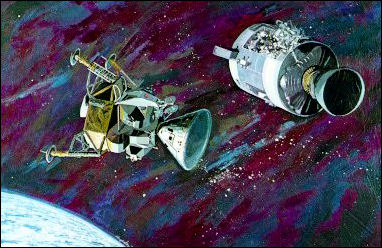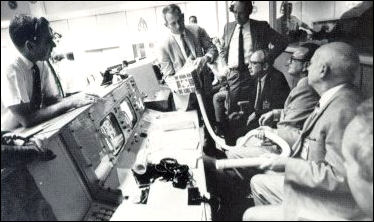
|
| Blast-gutted service module was set adrift from the combined command module and lunar module just four hours before Earth reentry. Mission Control had insisted on towing the wrecked service module for 300,000 miles because its bulk protected the command module's heat shield from the intense cold of space. The astronauts next revived the long-dormant command module and prepared to leave their lunar module lifeboat. |




